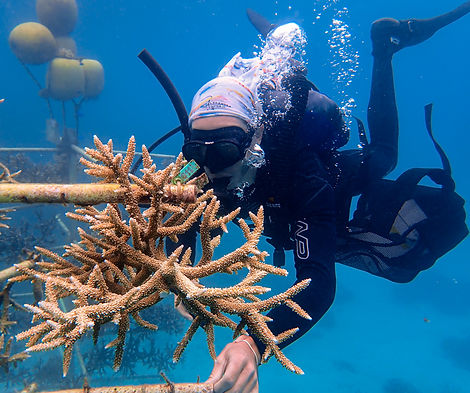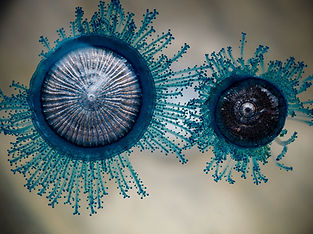



THE BIOLOGY OF
ECOSYSTEM PERSISTENCE
RESEARCH OVERVIEW
At the core of my research is the idea that ecosystem persistence arises from a cascade of mechanisms spanning cells, physiology, ecological interactions, and evolutionary processes. By tracing this cascade, we can uncover how basic biological interactions scale into ecosystem-level processes. My work is curiosity-driven, rooted in fundamental biology, yet often reveals insights that can inform conservation and management. I am not bound strictly by fields, techniques, or ecosystems. This positions me at a unique interface between 'blue sky' and applied biology.


PHOTOSYMBIOSIS
Photosymbiosis underpins most life on earth. In plants, the ancient integration of a photosynthetic endosymbiont facilitates their survival, now known as the chloroplast. In shallow marine ecosystems, a more recent form dominates. In this process, an algal cell is ingested into another organism to exchange nutrients yet retains its ability to live and reproduce independently. The most well-known example is reef-building corals, which form the structural foundation of coral reef ecosystems. However, photosymbiosis is found across a wide range of organisms and ecosystems.
My research explores how these host-alga relationships not only sustain individual organisms but also support entire ecosystems. To best understand the universalities of this relationship, I both study the basic biology of these dinoflagellates in culture conditions and across a diverse set of host systems, including corals, jellyfish, anemones, and even salamanders.
.png)


CORAL REEFS
Coral reefs sustain millions of people's lives and are widely considered the biodiversity center point of the ocean. Coral reefs likely began dominating nutrient-poor waters following the evolution of a symbiotic relationship between corals and photosynthetic dinoflagellates. No doubt, this relationship underpins the extraordinary productivity and biodiversity of coral reef ecosystems. Therefore, photo-endosymbiosis is the engine of coral reef persistence.
Generally, I investigate how this relationship is established, maintained, and destabilized. One of my favorite techniques is the chemical bleaching of cnidarian hosts followed by the reestablishment of symbiosis under different conditions. This allows me to isolate specific cellular mechanisms or ecological interactions that I think could support the entire ecosystem. I extend these insights into conservation biology by studying symbiotic dynamics within the context of coral restoration efforts (Anthony et al. 2024 Mar Poll Bull; Lock et al. 2025 Env. Microbiol.) and exploring technical approaches that exploit natural mechanisms for resilience (Anthony et al. 2025 One Earth).


THE OCEAN'S SURFACE
To test the generality of these mechanisms, I also study the ecosystem at the ocean's surface (termed 'the neuston'), a comparatively 'simple' ecosystem similarly centered around Cnidaria. My work has shown that these animals evolved from benthic ancestors (Anthony et al. 2024 Current Biology) and have since diversified into unique species, depending on their ocean basin (Church et al. 2025 Current Biology). Recently, we have been exploring the ecology of these organisms using iNaturalist observations (example photographs from iNaturalist below) as well as the biology of endosymbiotic dinoflagellates within two of the primary inhabitants Velella and Porpita, which raises new questions about the evolution of symbiosis and the mechanisms of ecological success.






Top-left: Porpita porpita observation from Omata, New Zealand on June 14, 2022 by Emily Roberts (CC-BY).
Top-middle: Velella velella observation from Paje, Zanzibar on August 29, 2021 by Catarina Lobato (CC-BY-NC).
Top-right: Mass beaching event of Velella velella in Oregon, United States on March 26, 2024 by Pond Gators (CC-BY-NC).
Bottom-left: Physalia physalis observation from Massachusettes, United States on August 31, 2020 by madaketmatt (CC-BY-NC).
Bottom-middle: Glaucus atlanticus observation from New South Wales, Australia on February 10, 2015 by drmattnimbs (CC-BY-NC).
Bottom-right: Floating Janthina janthina observation from New South Wales, Australia on September 6, 2018 by normfarmerimages (CC-BY-NC).

